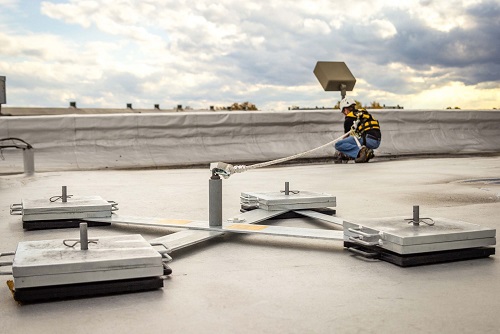 Friday, April 19, 2024
Friday, April 19, 2024  Friday, April 19, 2024
Friday, April 19, 2024 
Roof anchor fall protection is required with fall arrest and fall restraint systems. There is an important difference. Fall arrest systems allow a worker the greatest freedom of movement and range, such as reaching the roof edge. It stops or catches the worker from hitting the ground or lower level and absorbs the energy from a fall. A fall restraint or travel restraint system prevents the worker from reaching a fall hazard.
National, provincial, and territorial regulations for active fall protection systems in Canada include roof anchors for personal fall protection equipment, notably harnesses, body belts, lifelines, lanyards, and energy absorbers. The fall arrest anchor can be a mobile (temporary) or fixed (permanent) anchor point.
Mobile anchors are ideal where the installation of a collective fall protection system, such as perimeter guardrails or permanent anchor devices, is not viable or practical. Mobile devices can also make sense when roof access is infrequent—once a month or less—and short-term (less than two hours).
A mobile anchor device is designed for flat and low-slope roofs. They have rubber-coated deadweights with suction cups to reduce the chance of friction and movement and to protect the roof surface. A central pedestal on the deadweight anchor enables the attachment of a safety harness and lanyard and raises the height at which the fall arrest force is applied. They can be situated and moved to any number of places on the roof depending on the work to be done.
Keep reading this article on KeeSafety.ca